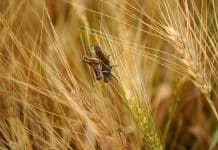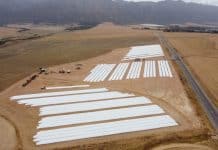This article is part of a series of informative animal health articles. The series goes hand in hand with the #VideoVet video series – watch the video below.
Bovine brucellosis is a highly contagious disease caused by an intracellular bacterium known as Brucella abortus. Brucellosis is characterised by abortions in the herd. However, abortions are limited to the first pregnancy.
Disease transmission
Large numbers of the organisms are present in aborted foetuses, foetal membranes and uterine discharge. Transmission occurs when cattle ingest contaminated feed and water, or more commonly, when susceptible cows lick newborn calves born from infected cows or investigate aborted foetuses in the field. Venereal transmission between infected bulls and susceptible cows appears to be rare. Transmission may also occur when Brucella-contaminated semen is deposited in the uterus through artificial insemination. Live bacteria have been recovered from foetuses and soil that remained in a cool environment for more than two months. However, direct sunlight kills the organisms within a few hours.
Zoonotic disease
It is crucial to remember that brucellosis is a zoonotic disease. Brucella bacteria affect people and animals and may enter the body through mucous membranes, conjunctivae, wounds, or intact skin. It can also be transferred from animals to humans by drinking unpasteurised milk from infected cows or contact with amniotic fluid or aborted material.
Clinical symptoms
The most common symptom of brucellosis is abortions, usually from month five to six of gestation. Less common signs include retained placentas, metritis and infertility in cows, and orchitis or epididymitis in bulls. Chronically infected animals may have hygromas (swelling of the joints).
Diagnosis and treatment
Bovine brucellosis is a state-controlled disease under the Animal Diseases Act, 1984 (Act 35 of 1984). Tests for brucellosis include the milk ring test (MRT) on bulk milk tanks, serum blood tests for individual animals, the complement fixation test and the Rose Bengal test. All tests must be done at an accredited laboratory. Blood can only be tested for antibodies, not infection. As a result, tests will only show whether an animal came into contact with the bacteria. The bacteria can be cultured from aborted foetuses, placenta, uterine fluid and lymph nodes from cows after slaughter.
There is currently no treatment for bovine brucellosis.
Eradication and control
The administration of S19 and RB51 vaccines greatly decreases the risk of cattle becoming infected and assist with minimising the abortions in infected herds. These vaccines can cause brucellosis in humans. RB51 contains a live strain of Brucella abortus, without the O-LPS side chain. Therefore, no false positives show up on subsequent testing. It is critical to use only the diluent that is provided with the RB51 vaccine. Do not vaccinate bulls with RB51 as it may cause infertility; in pregnant cows the use of RB51 will result in abortions.
RB51 vaccination schedules
Brucella abortus negative herds: In herds that have not been vaccinated against Brucella abortus, vaccinate heifers between four and ten months of age with 2 ml vaccine administered subcutaneously. Revaccinate with a full dose between twelve and 16 months of age. In adult, non-pregnant cows, administer 2 ml vaccine
subcutaneously. In herds with established immunity (previously vaccinated against
Brucella abortus), vaccinate heifers at four to ten months of age with 2 ml vaccine
administered subcutaneously. Revaccinate with a full dose between twelve and 16
months of age.
Brucella abortus positive herds: In herds that have not been vaccinated against Brucella abortus, vaccinate heifers at four to ten months of age with 2 ml vaccine administered subcutaneously. Revaccinate with a full dose between twelve and 16 months of age. In adult, non-pregnant cows, administer 2 ml vaccine subcutaneously. Yearly boosters can be administered if necessary, but it is not a prerequisite.

RB51
Reg. No. G3056 (Act 36/1947).
Namibia Reg. No. V03/24.4/756 NS0
Composition: Lyophilised vaccine containing the RB-51 strain of Brucella abortus.
Indications: For use in healthy female cattle as an aid in the prevention of infection and abortion caused by Brucella abortus.
Dosage: 2 ml subcutaneously.
Pack size: 5 dose (rehydrate to 10 ml); 25 dose (rehydrate to 50 ml).
For more information, contact your MSD Animal Health representative or visit www.msd-animal-health.co.za. To watch more videos in this series, click here.







